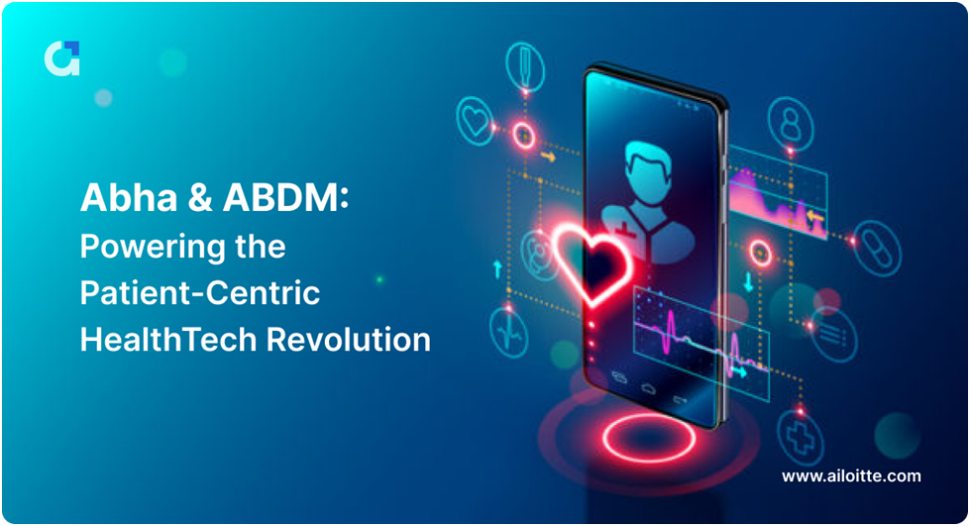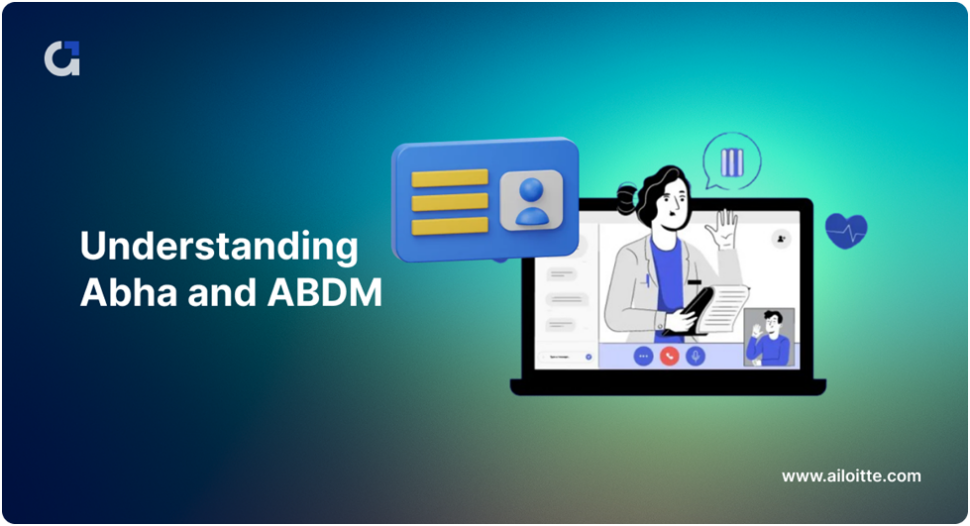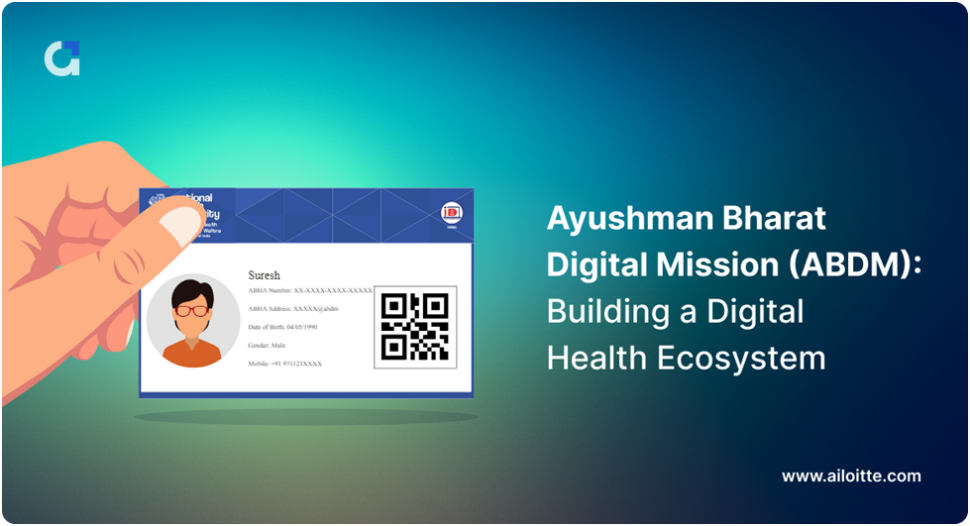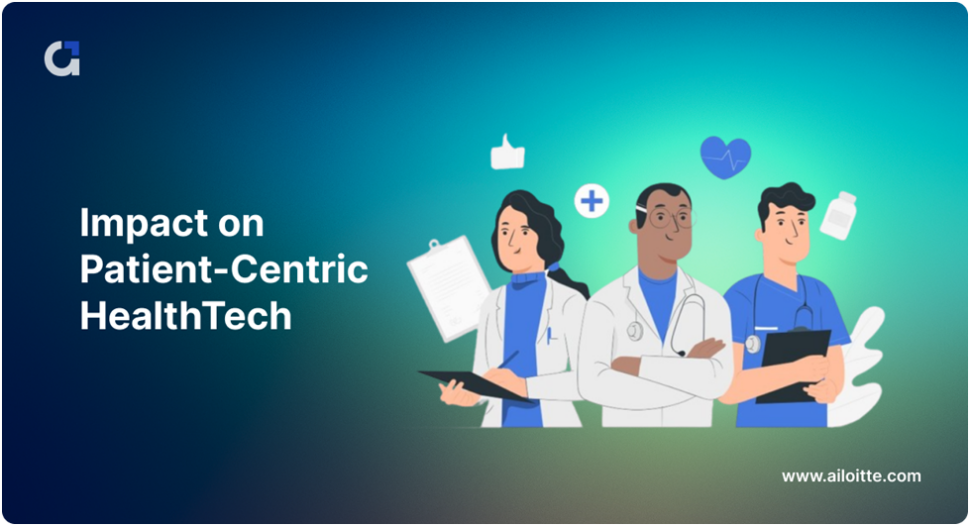Patient-centric healthcare puts the patient’s needs, preferences, and values at the center of every decision. You’re in control of your healthcare journey, not the system. This idea is becoming more popular because patients are more empowered, technology is improving, and healthcare costs are going up. It’s good because it means you’re more involved, your health gets better, and it costs less. This is how healthcare will be in the future!
In India, two important programs, Abha and ABDM, are changing how healthcare is done with digital tools. Here’s a quick look at what they are doing and how they’re making a difference:
- Abha (Ayushman Bharat Health Account): Starting in 2022, Abha gives every Indian a unique 14-digit digital health ID. With this ID, you can access all your health records, prescriptions, and lab reports from different doctors and hospitals. It helps you manage and share your health information easily.
- ABDM (Ayushman Bharat Digital Mission): Launched in 2020, ABDM is a big project to improve digital health in India. It includes Abha as its main part, along with things like lists of healthcare workers and facilities, and telemedicine services.
Abha and ABDM are changing how healthcare works in India by
- Making it easier to share your health information: Doctors can see your records quickly, which means better care and fewer repeat tests.
- Giving you more control: You can manage who sees your data and learn more about your health.
- Encouraging new ideas: The way these programs work together helps new health technology ideas grow.
- Making healthcare faster and easier: Things like online doctor visits, and digital prescriptions, and lab results online save time and make healthcare more accessible.
These changes are a big step towards a healthcare system in India that’s more focused on patients. It means you have more say in your health, leading to better decisions and better health.

This blog will look at how following ABHA and ABDM rules affects the future of health technology for patients in India. We’ll see how these big changes are making healthcare different and giving patients more control over their health information. We’ll talk about the good things that can happen and the problems that might come up. This will help us understand how people making health technology, the government, and patients can all use Abha and ABDM to make healthcare better for everyone.
Understanding Abha and ABDM

Abha Digital Health ID:
Abha gives every Indian a special 14-digit number that opens the door to the digital health world. With this ID, you can:
- Bring together all your health info (like hospital visits, lab reports, and prescriptions) from different places.
- Get your health info easily and safely whenever you want.
- Share your info with doctors when you need to, making it easier to keep track of your care.
Consent Management:
With Abha, you decide who can see your health info. You can:
- Give certain doctors access to certain parts of your info (like medical history for one, prescriptions for another).
- Take away access whenever you want.
- See who’s looked at your info and why
By putting you in control of your health data, Abha aims to transform healthcare delivery, making it more patient-centric, efficient, and personalized.
Ayushman Bharat Digital Mission (ABDM): Building a Digital Health Ecosystem

The Ayushman Bharat Digital Mission (ABDM) is a big initiative launched by the Indian government to create a nationwide digital health ecosystem. Its key objectives are:
- Universal health coverage: Make it easy for everyone in India to get healthcare, no matter where they live or how much money they have.
- Efficiency and accessibility: Streamline healthcare processes through digitization, improving affordability and accessibility.
- Patient empowerment: Put patients in control of their health data, promoting informed decision-making and personalized care.
- Improved health outcomes: Use technology and what we know from data to stop people getting sick, find problems early, and treat them better.
ABDM achieves these objectives through a network of interconnected components:
- ABHA: The special digital health ID lets you control your health data.
- Health Facility Registry (HFR): A big list of all hospitals and clinics in India, making it easy to find help.
- Healthcare Professionals Registry (HPR): Keeps track of all real doctors, nurses, and pharmacists to help them work together.
- Unified Health Interface (UHI): Connects different healthcare apps so they can share info and help you.
- Telemedicine services: Lets you see a doctor from far away, making it easier to get help.
- E-prescriptions and e-Lab reports: Turns your prescriptions and test results into computer files, making it harder to make mistakes and easier to share.
- Health Locker: A safe place for you to keep your health papers, like shots records and fitness info.
ABDM is still getting better, with new things being added all the time. If you join in, you can help make a health system that’s good for everyone.
At the center of Abha and ABDM is a big change: now, you control your health info.
Abha is like your own health safe. With your special digital health ID, you can get, manage, and share your health info from different places easily. Before, it was hard to keep track of everything, but now you’re in charge. You choose who sees your info and when.
ABDM does even more than just give you access to your info. It makes a system where you have control in every part. With things like UHI and tools to manage who sees your info, you can say how your info moves between doctors. This means you’re part of every decision about your health.
This isn’t just about making things easier; it’s about making you stronger and healthier. When you have all your health info in one place, you can talk better with doctors, get ahead of problems, and make sure you get the right care.
Remember, Abha and ABDM are more than just websites; they’re a big change in how we do healthcare. When you use and understand them, you become part of making healthcare better for everyone.

Impact on Patient-Centric HealthTech
The start of Abha and ABDM in India is a big chance to make health technology all about patients. Let’s look at the good things and problems that might come up when we follow these rules:

Positive Impacts:
- Seamless data exchange: Abha and UHI help doctors share info safely. This lets health apps use your info with your OK, so they can understand your health better and give you personalized help.
- Enhanced patient engagement: Apps can use Abha’s features, like health lockers, to let you see your info easily. This helps you be part of your own care decisions.
- Personalized care: With more of your info, health apps can make plans just for you, like which meds to take or when you might get sick.
- New patient-centric solutions: ABDM makes it easy for new health apps to be made. This means more apps focused on things like helping you manage long-term health issues or taking care of your mental health.
Challenges and Considerations:
- User-friendliness and accessibility: Health apps must be easy to understand and work well for all kinds of people so that many people can use them.
- Privacy and security concerns: Building trust through robust data security measures and transparent data-sharing practices is essential. Addressing patient concerns about data misuse is vital.
- Following the rules: It can be hard for health-tech developers to keep up with all the rules they need to follow.
- Digital divide: Making sure everyone can use technology and knows how to use it is really important so that everyone can be part of things.
In the end, Abha and ABDM are a big chance to make health tech about you. If we deal with the problems and use the good parts, we can make healthcare better for everyone.
Case Studies and Examples:
Abha and ABDM are already showing us new ways to make health technology all about patients in India. Here are some real-world examples of HealthTech Solutions Powered by Abha and ABDM:
- MyoChronic: This app uses Abha to help people with long-term health issues like diabetes. It gets info from wearables, lab reports, and medical records connected to Abha. Then, it gives personalized advice and reminders for things like taking meds, eating right, and staying active.
- Lybrate: This app for mental health works with Abha. It lets patients share their health info with therapists safely and easily. This helps therapists understand the problems better and make plans to help.
- OneMedTel: This online pharmacy uses Abha to check prescriptions safely and deliver medicine. Patients can easily get their prescriptions and order refills on the website.
- Svastha: This online doctor service uses Abha to confirm who patients are and see their medical info. Doctors can check important health details with permission from patients, which helps them give advice and diagnose problems, even in faraway places.
- AarogyaSetu: This app made by the government works with Abha for COVID-19 vaccine records and health updates. It helps people keep track of their vaccines and see their health info easily.
These are just a few examples, and things are always changing. As Abha and ABDM get better, we’ll see even more cool health apps that put you in charge of your health.
The patient-centric health tech solutions we explored showcase the exciting impact of Abha and ABDM. Now, let’s look closer at how they help you, improve care delivery, and address specific healthcare challenges:
- Empowering Patients:
- Data Ownership and Control: With Abha, patients manage their health data, deciding who can access it and for what purpose. This helps them make good choices about their care.
- Transparency and Accessibility: Apps like MyoChronic use data from wearables and medical records to give patients personal info about their health. This helps patients know how they’re doing and what to do next.
- Convenience and Efficiency: Services like OneMedTel make it simple to get prescriptions and order refills online, reducing unnecessary hospital visits and simplifying medication access.
- Improving Care Delivery:
- Streamlined Data Exchange: ABDM’s interoperability allows platforms like Svastha to access relevant health information with patient consent, enabling comprehensive diagnosis and informed treatment decisions by doctors.
- Personalized Interventions: Apps like Lybrate use Abha data to make therapy plans just for you, based on what you need and your medical history. This helps improve mental health.
- Remote Access and Equity: Telemedicine apps like AarogyaSetu help people in faraway places see doctors, so they can get the care they need, even if they live far from a hospital.
- Addressing Specific Challenges:
- Chronic Disease Management: MyoChronic helps people with diabetes take care of themselves better by giving them personal advice and reminders. This might mean fewer problems and better health.
- Mental Health Support: Lybrate eliminates stigma and provides convenient access to therapy, addressing the under-served mental health needs in India.
- Accessibility and Affordability: Platforms like OneMedTel and Svastha simplify medication access and potentially reduce costs, addressing affordability concerns for patients.
Future Outlook and Recommendations
Here is the long-term vision for Abha and ABDM in shaping a patient-centric healthcare ecosystem:
Patients in Control:
Imagine a future where Abha and ABDM empower patients with seamless access to their medical records, personalized care plans, and remote monitoring tools through a unified platform. Patients actively participate in managing their health and making informed decisions.
Data-Driven Insights:
Healthcare decisions are made using real-time data analysis from Abha and ABDM, which helps doctors improve treatments, prevent health issues, and use resources better.
Connected Ecosystem:
Abha and ABDM connect different parts of healthcare, like doctors, tech companies, and researchers, so they can work together smoothly and help patients better.
Proactive and Preventative Care:
The focus shifts from reactive treatment to predictive and preventive care, using data-driven insights to identify potential health risks and intervene early.
Equity and Accessibility:
Technology becomes a tool for bridging the access gap, ensuring everyone benefits from patient-centric healthcare, regardless of location or socioeconomic background.
To help patients take charge in the new era of healthcare focused on them, Abha and ABDM need to do three main things. First, patients should learn how to use their data and tools to manage their health while keeping their information private. Second, developers should create easy-to-use platforms that follow the rules and keep data safe. Lastly, policymakers should help everyone get access to digital tools, make clear rules, and encourage developers to work with Abha and ABDM. It’s only when everyone works together that we can truly make healthcare all about the patients.
By teaching patients, encouraging them to use technology wisely, and keeping their data safe, Abha and ABDM could change healthcare a lot. Picture a future where patients control their medical information, use data to stay healthy, and work easily with their doctors online. This new way of doing things, with safe data sharing and strong security, could make healthcare more personal, stop problems before they start, and help everyone get better care. Abha and ABDM aren’t just new technology; they give patients more power over their health journey. That’s what makes this new era in healthcare so exciting.
Conclusion
Think about a future where you, as the patient, have the power. Abha and ABDM hold the key to unlocking a healthcare ecosystem designed just for you. Imagine being able to get your medical records easily, share them with your doctors without any trouble, and use helpful information to guide your health decisions. This future isn’t far away; it’s the potential of Abha and ABDM, where patients like you lead the way to a healthier, more informed tomorrow.
The power of Abha and ABDM to change healthcare depends on everyone working together, not just one leader. Patients, learn about your health and use tools to be active in your care. Doctors, share information to give better treatment. Developers, make easy and safe platforms with privacy in mind. Policymakers, make clear rules and help people understand technology. The future of patient-centric health is an open invitation, waiting for your unique contribution. Let’s make healthcare better, step by step. It’s time to get involved, shape the future, and make patient-centric healthcare a reality for all.
FAQs
Ayushman Bharat Health Account (ABHA) or Health ID is an initiative of the Indian government under the Ayushman Bharat Digital Mission (ABDM) for Indian citizens to establish a centralized database of all their health-related data.
Patient-centric healthcare puts the patient at the center of their health journey. It’s about respecting their preferences, empowering them with information and tools, and collaborating on decisions. This is important because it leads to better health outcomes, more cost-effective care, and ultimately, happier and healthier patients.
The cardholders can use their ABHA card to avail of free medical treatment at any government hospital or health center across India. The ABHA card also entitles the holder to get discounts on medicines and other medical expenses.
Abha and ABDM compliance aims to empower patients in healthcare through:
Data access and control: Patients own their data through Abha, easily sharing it with providers for personalized care.
Transparency and engagement: Clear data practices and user-friendly tools enable patients to actively participate in their health journey.
Improved care: Data exchange between providers facilitates better diagnosis, treatment, and preventive measures.
Stay updated with Abha and ABDM by using these tips:
Official Websites: Visit their official websites ([invalid URL removed] & abdm.gov.in) for news and updates.
Social Media: Follow them on social media like Twitter and LinkedIn for more updates.
News & Articles: Subscribe to healthcare technology news sites or magazines that cover Indian healthcare.
Events & Webinars: Attend industry events, webinars, and workshops related to Abha and ABDM.
Connect with Experts: Connect with healthcare experts, developers, and policymakers who are part of Abha and ABDM to learn more.
The success of Abha and ABDM hinges on the collaborative efforts of all stakeholders:
Patients: Get involved by using the platforms, controlling their data, and providing feedback.
Developers: Build user-friendly, secure, and Abha/ABDM-compliant solutions that prioritize patient privacy and interoperability.
Policymakers: Create clear regulations, promote digital literacy, and encourage everyone to take part.
By working together, these stakeholders can build trust, overcome challenges, and make Abha and ABDM work even better for patients.
Leave a Reply
Feeling lost?
Let's make it simple: Find the best healthcare IT solution for you!


















.png)
.png)
.png)



Leave a Comment